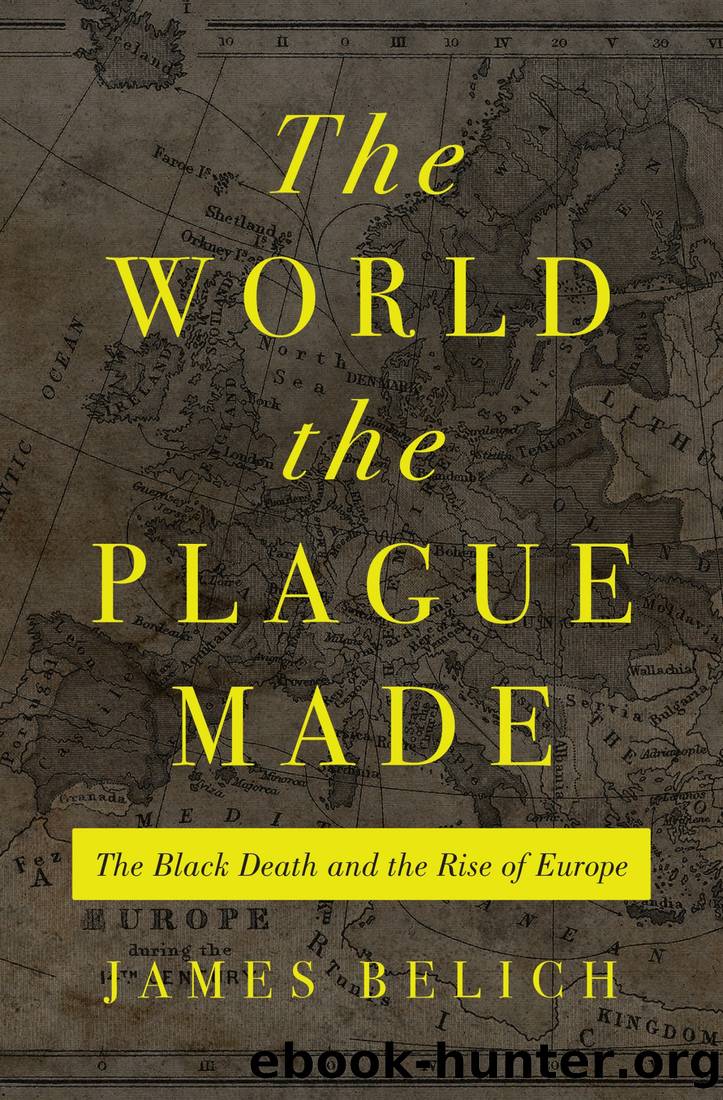The World the Plague Made by James Belich

Author:James Belich [Belich, James]
Language: eng
Format: epub
ISBN: 9780691215662
Publisher: Princeton UP
Published: 2022-04-23T00:00:00+00:00
This rather rosy picture of Mughal modernity seems broadly accurate, but needs qualification. First, it is not clear that the mass of the people benefited from commercial prosperity, or from Mughal rule. Taxes on grain went as high as 50%, and there were some terrible regional famines. One study finds a decline in Indian GDP per capita from 1600, though others dispute this.102 Second, the Mughalâs empire was arguably of the now familiar âpatchworkâ variety, with difficult terrain excluding many regions from real control. The Emperor must âbe regarded as ruling no more than half the dominions which he claims, since there are nearly as many rebels as subjectsâ.103 Third, there is some residual truth in the notion that the Mughals and other large Indian states kept maritime concerns at armâs length. The imperial family and leading officials had ocean-going ships built for them in Gujarat from the 1570s, and were very interested in annual voyages for the Hajj pilgrimage, which was a major exercise in overseas trade as well as religion.104 But they seldom tried to fight Europeans or Omanis on the open ocean, and failed when they did. Between 1639 and 1698, the Mughals were sporadically at war with the tiniest of European lodgments in India, that of the Danes. The Danish âempireâ in India was based at Tranquebar in the Coromandel and had a few unfortified factories as well. The Mughals could seize the factories, and probably Tranquebar too, but they kept losing ships to the Danesâtwo were blown up in the Hughli River, 35 kilometres north of Calcutta, in 1671.105 This was no more than a pinprick to the Mughals, whose land power enabled them to hold European land possessions and trade networks hostage in a âbalance of blackmailâ.106 But the capacity to threaten Indian ships and the Hajj pilgrimage gave Europeans (and Omanis) more leverage than the other merchant networks. The final qualification is that Mughal âmodernityâ and success were not strictly Mughal, but rather a variant of West Eurasian expansion, Muslim style.
That the Mughals acquired and adapted a West Eurasian expansion kit, and used it for successful expansion, is only half of the argument here. Many experts would say that the expansion lapsed quickly into dispersal, losing strong connections to its homelands in Iran and Turan, with which relations were sometimes actively hostile. âFor their own reasons, Indian historians working in the Orientalist, Marxist, nationalist, and other traditions have tended to minimize any connections that the Mughal nobility retained with their ancestral homelandâ.107 The Mughals were just another wave of Muslim invaders, it is assumed, to be quickly domesticated by India except in religion. Yet Babur was not welcomed by the preexisting Muslim population. âMost Indian Muslims ⦠regarded Babur as alienâ.108 To a significant extent, the Mughal Empire remained rooted in Greater Persia until the beginning of its decline in 1707, without controlling the space between their âinformal metropolisâ, to coin a term, and their great Indian âcolonyâ. Their continuing âobsessionâ with the homelands is sometimes dismissed as nostalgic and irrational.
Download
This site does not store any files on its server. We only index and link to content provided by other sites. Please contact the content providers to delete copyright contents if any and email us, we'll remove relevant links or contents immediately.
Nudge - Improving Decisions about Health, Wealth, and Happiness by Thaler Sunstein(7261)
iGen by Jean M. Twenge(5166)
The Fire Next Time by James Baldwin(5025)
Adulting by Kelly Williams Brown(4240)
The Hacking of the American Mind by Robert H. Lustig(4093)
The Sports Rules Book by Human Kinetics(4081)
The Ethical Slut by Janet W. Hardy(4042)
Captivate by Vanessa Van Edwards(3732)
Mummy Knew by Lisa James(3523)
In a Sunburned Country by Bill Bryson(3376)
The Worm at the Core by Sheldon Solomon(3328)
Ants Among Elephants by Sujatha Gidla(3282)
Suicide: A Study in Sociology by Emile Durkheim(2908)
The Slow Fix: Solve Problems, Work Smarter, and Live Better In a World Addicted to Speed by Carl Honore(2843)
The 48 laws of power by Robert Greene & Joost Elffers(2818)
Humans of New York by Brandon Stanton(2694)
Handbook of Forensic Sociology and Psychology by Stephen J. Morewitz & Mark L. Goldstein(2606)
The Happy Hooker by Xaviera Hollander(2586)
The Tipping Point by Malcolm Gladwell(2565)
